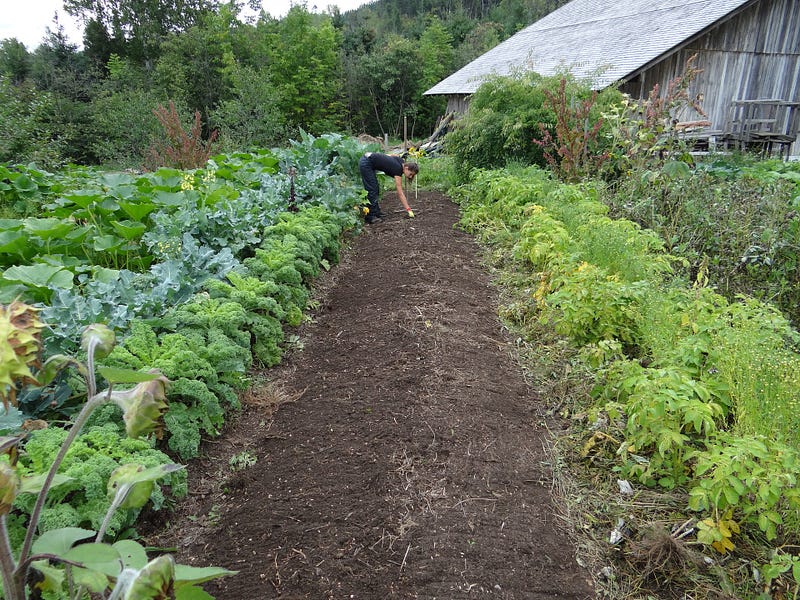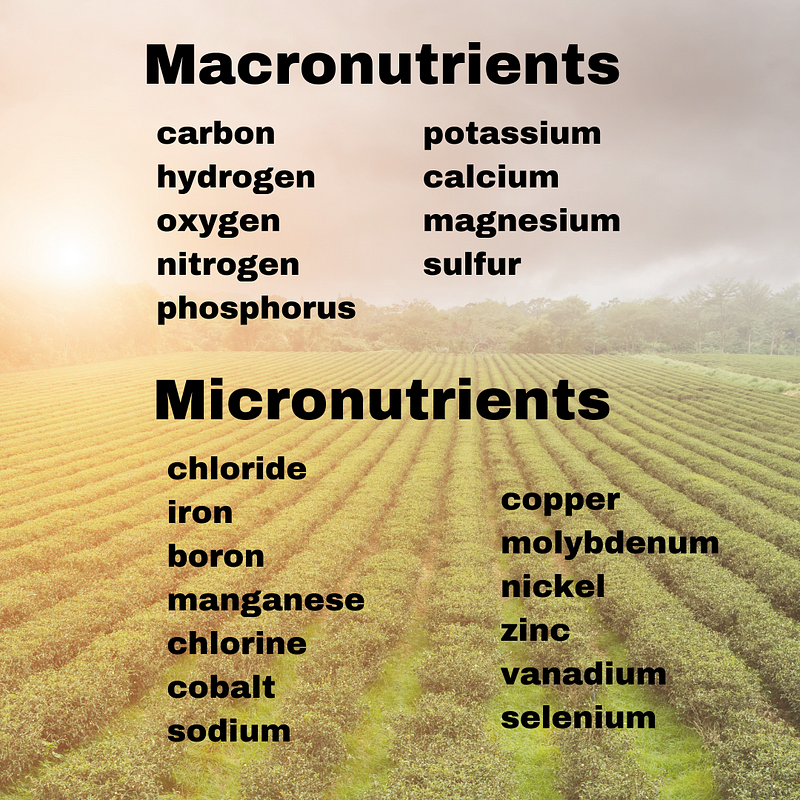# Understanding Photosynthesis: Essential Knowledge for Gardeners
Written on
Chapter 1: The Basics of Photosynthesis
Many of us recall the basics of photosynthesis from our school days. It's often described as the process by which plants create their food using sunlight, carbon dioxide, and water. However, this definition is somewhat simplistic and doesn't fully support gardeners in understanding plant needs.

Plants indeed have the ability to produce their own food, yet they require more than just light and water. While we often hear about the necessity of soil and fertilizers, one might wonder why soil is important if plants can synthesize their food. Is it merely a support structure for roots to access moisture? This was a puzzle for me when I first delved into gardening, and I suspect I'm not alone in my confusion.
Plants require carbon dioxide, water, nutrients, light, and appropriate temperatures to thrive. The traditional view of photosynthesis overlooks the fact that plants depend on various nutrients found in the soil. Although soil serves as a foundation for plants, it also plays a crucial role in nutrient delivery.
Roots explore the soil and absorb nutrients stored within it, as well as drawing water towards the plant's stem and leaves. Not all nutrients dissolve in water, so the presence of beneficial bacteria and fungi in the soil is essential. These microorganisms break down nutrients from both mineral and organic sources, converting them into forms that roots can absorb. Currently, experts recognize that plants require 22 essential nutrients, with carbon, hydrogen, and oxygen being sourced from the air and water.

The primary nutrients are nitrogen, phosphorus, and potassium, commonly referred to as NPK, which you'll often see on fertilizer packaging. For instance, a fertilizer labeled 5–1–1 contains 5 lbs. of nitrogen, 1 lb. of phosphorus, and 1 lb. of potassium per 100 lbs.
- Nitrogen (N): Vital for leaf growth.
- Phosphorus (P): Crucial for root development and flowering.
- Potassium (K): Supports various plant functions.
Additionally, plants require micronutrients in trace amounts, which are typically present in soil but need the action of microorganisms to become accessible.
While we can't control sunlight and air, we can certainly improve our soil quality. The key to thriving soil is an abundance of organic material—often referred to as the super-food for plants. Ideally, your soil should consist of about 5% organic matter by weight or volume. Organic matter includes decomposing plant and animal material, which transforms into valuable humus.
Soil composition should also feature approximately 45% minerals (sand, silt, and clay) and 50% air and water. For further insights into the importance of soil minerals, consider reading about "Soil Minerals: The Other Missing Ingredient in Your Garden."
By balancing macronutrients, micronutrients, microorganisms, water, sunlight, and carbon dioxide, we can cultivate healthy plants. Just as humans require a balanced diet of proteins, carbohydrates, healthy fats, vitamins, and minerals, plants depend on the nutrients available in their soil.
Envision soil not merely as a growth medium, but as a living organism vital to plant health. It functions as the heart, lungs, and nervous system of your garden, playing a crucial role in the vitality of your crops.
Plants are unique in that they can absorb both nutrients and water through their roots, as well as carbon dioxide from the air. Thus, the quality of soil and environmental conditions are key determinants of plant growth and productivity.
In summary, plant growth hinges on a combination of soil nutrients, water, carbon dioxide, and sunlight. I appreciate your engagement as we explored the intricacies of photosynthesis and plant nutrition. The more you understand about plant growth, the more proficient you'll become as a gardener.
Questions or comments? I welcome your thoughts—please share them in the comments or reach out to me directly. I'm always eager to discuss gardening!
Chapter 2: The Importance of Heirloom Plants
Heirloom plants not only provide sustenance but also tell rich stories of history and heritage, tracing back to pioneer gardens.
Cindy Heath is a dedicated writer with a passion for empowering others to grow and prepare healthy food. Subscribe to my weekly newsletter for recipes, gardening tips, and more!